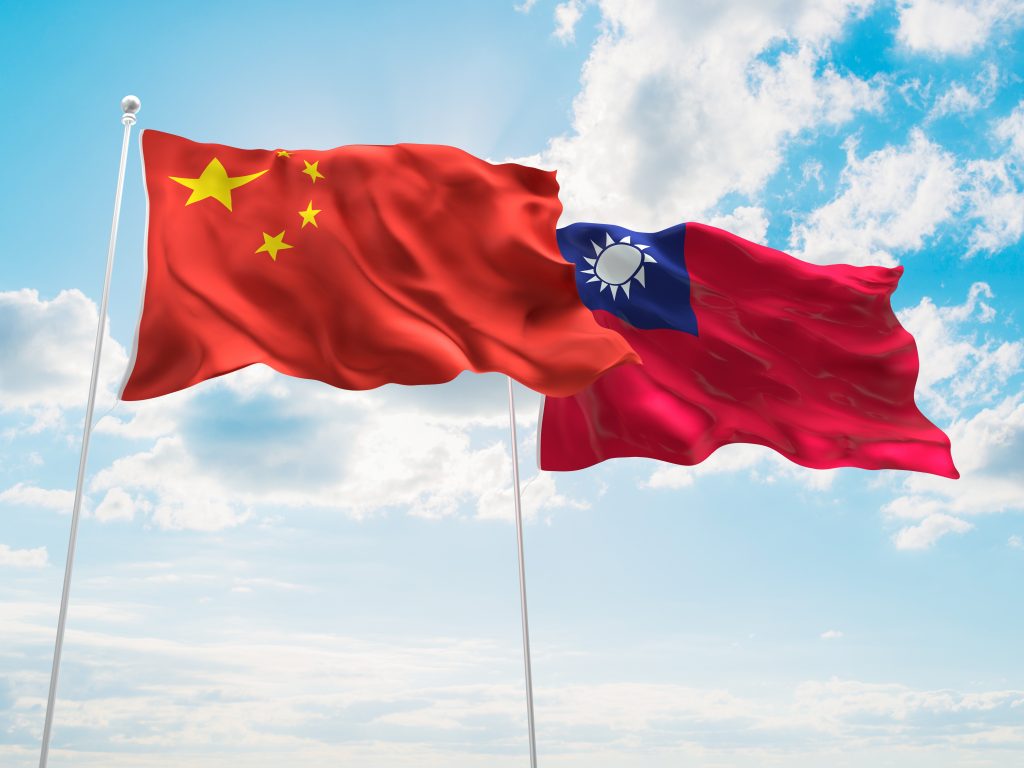Taiwan Situation Trumps Trade War
A cooling of U.S.-China trade tensions hasn’t resulted in improved relations between the two countries, because other bilateral issues—especially the Taiwan situation—have moved into a critical phase.

The onset of the global COVID-19 pandemic pushed a lot of market narratives off the front pages, including the ongoing trade war between the United States and China.
However, competition between the world’s two largest economies hasn’t gone away—not by a long shot.
The so-called “trade war” between the U.S. and China was in the news recently because the top U.S. trade representative, Ambassador Katherine Tai, provided some key updates on current trade relations between the two countries.
Superficially, little has changed as of October 2021, as Ms. Tai indicated that most of the existing tariffs levied by the previous administration wouldn’t be lifted anytime soon.
Moreover, she repeated a familiar complaint that Chinese purchases of American goods are well behind on the quotas laid forth in the Phase One trade deal signed with China back in January of 2020.
Current estimates suggest that China will end the year about 30% short of its 2021 Phase One purchase commitments. That’s after falling short by roughly 40% during 2020.
Not surprisingly, Chinese trade representatives have argued that complications from the pandemic have contributed to those shortfalls.
But instead of threatening further decoupling from China, Ms. Tai appeared to suggest that a recoupling between the two countries might be possible. The use of that word seems to suggest there may be a light at the end of the tunnel as it relates to resolving trade differences between the two countries.
Furthermore, Ms. Tai indicated that the Biden administration would be more open going forward to grant additional exemptions for certain tariffs. Exemptions are granted when a U.S. company or industry group presents compelling evidence that their business, or the broader economy, is being crippled unnecessarily by a tariff.
Taken together, these developments suggest the Biden administration is working to deescalate current trade war tensions with China—even if ever so slightly.
Investors and traders likely exhaled in the wake of these positive developments, as trade war tensions have pulled down the market previously, as illustrated in the chart below.
However, the good news appears to end there.
While trade relations may have improved marginally, other aspects of the U.S.-China bilateral relationship appear to be moving in the wrong direction.
At the top of the list of concerns is the current Taiwan situation.
China has long considered Taiwan part of it’s sovereign territory, but the two regions have been governed separately since China’s Civil War ended more than 70 years ago—when the defeated Nationalists fled to the island of Taiwan.
Despite that reality, China continues to view Taiwan as inseparable from the mainland and hasn’t ruled out using military force to ultimately take control of what it views as a breakaway province.
In 2004, China even passed a so-called anti-secession law, laying out China’s right to use non-peaceful means against Taiwan if it tries to secede from China.
Taiwan, for its part, has continuously rebuffed any attempts to reunify with the mainland. And due to its strategic importance as a high-technology manufacturing hub, countries with close ties to Taiwan, such as the U.S., have continued to support the territory’s efforts to remain independent—much to the chagrin of the mainland.
U.S. support for Taiwan was clarified in terms recently when the U.S. sent a high-level State Department delegation to visit Taiwan last September—in the face of strong opposition from mainland China.
And while the Taiwan situation is extremely complex, one of the primary pain points relates to the U.S.’ unspoken promise to intervene on Taiwan’s behalf in the event of an invasion by China. That tacit agreement ties back to World War II, when the U.S. was partnered with the Nationalists of China—the same group that eventually relocated to Taiwan.
Technically, the U.S. hasn’t explicitly committed itself to the defense of Taiwan, but under the guise of strategic ambiguity, the U.S. military complex has quietly stocked Taiwan with billions worth of military arms—including highly-sought fighter jets and ground-to-air missiles.
Taiwan is currently in focus because the Chinese military recently deployed a large number of aircraft into Taiwan’s defense zone. A move that was viewed as an intimidation tactic on the part of the mainland, and the latest in a long series of such altercations.
In the past week, Taiwan reported that a mix of nearly 150 People’s Liberation Army Air Force (PLAAF) fighter jets, nuclear-capable bombers, anti-submarine aircraft and other planes entered its Air Defense Identification Zone (ADIZ).
While the aircraft didn’t technically invade Taiwan’s sovereign airspace—officially designated as 12 nautical miles from its coastlines—they entered an area which Taiwan has previously indicated as off-limits.
Then, on Oct. 7, the Wall Street Journal made waves when the publication reported that U.S. marines have been operating in Taiwan for more than a year, purportedly training the local military.
If confirmed by other sources—most importantly by mainland China—that particular revelation could be tectonic. There is absolutely no doubt that China would respond to such a development definitely, and rapidly.
In that context, the recent softening of rhetoric on the trade war now looks like it might have been a preemptive move by the U.S. to get ahead of the Wall Street Journal report.
Regardless, recent developments suggest that U.S.-China relations may be entering new territory. At a minimum, China will undoubtedly demand that U.S. troops leave Taiwan immediately.
There’s no telling how the U.S. might respond.
So while trade tensions might currently be loosening, there’s no telling how long the current detente will last. As referenced previously, one of the more dramatic pullbacks on Wall Street in recent years was tied to the trade war—in late 2018. And if it happened once, it can certainly happen again.
For more context on recent weakness in China’s financial markets, readers are encouraged to review a new installment of Truth or Skepticism featuring tastytrade co-founder and co-CEO Tom Sosnoff and long-time business journalist Dylan Ratigan.
To follow everything moving the markets during the remainder of 2021, readers can also tune into TASTYTRADE LIVE—weekdays from 7 a.m. to 4 p.m. CST—at their convenience.
Sage Anderson is a pseudonym. He’s an experienced trader of equity derivatives and has managed volatility-based portfolios as a former prop trading firm employee. He’s not an employee of Luckbox, tastytrade or any affiliated companies. Readers can direct questions about this blog or other trading-related subjects, to support@luckboxmagazine.com.



















